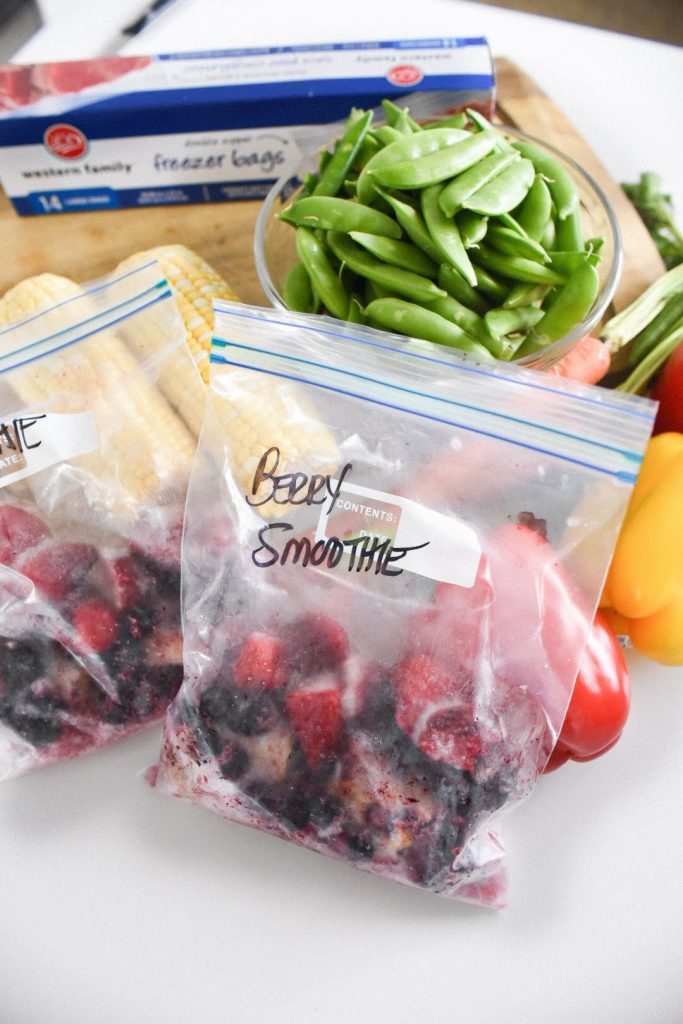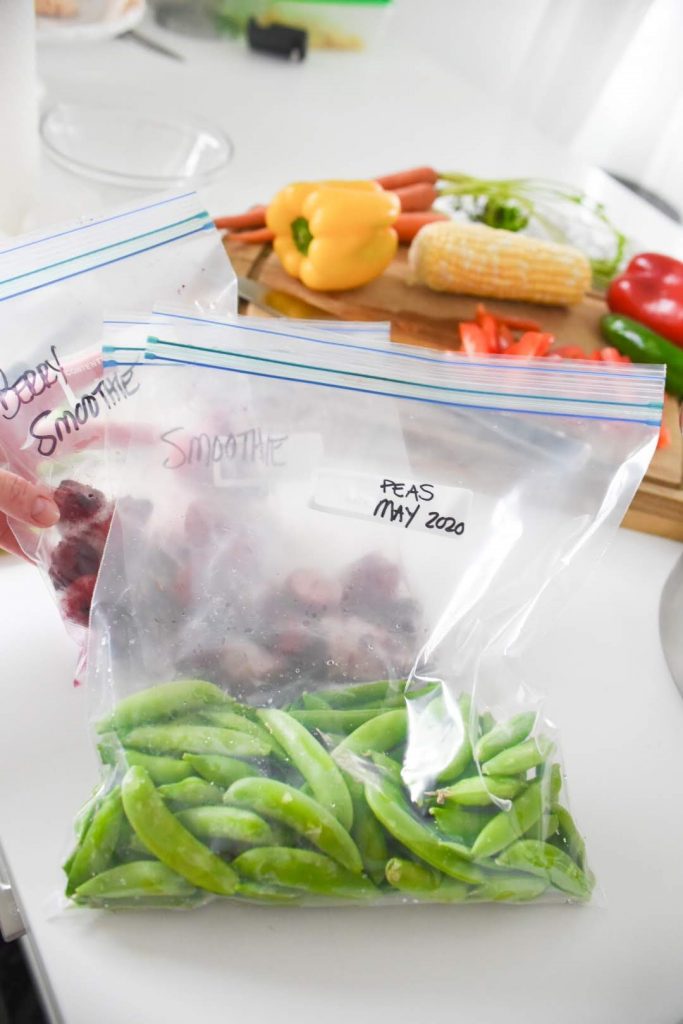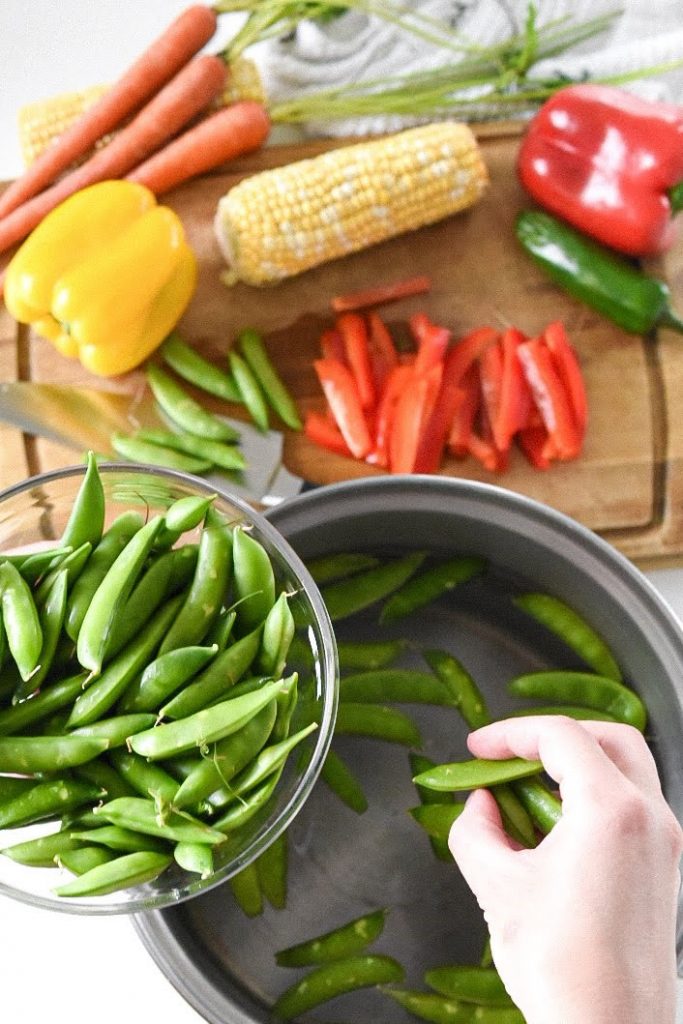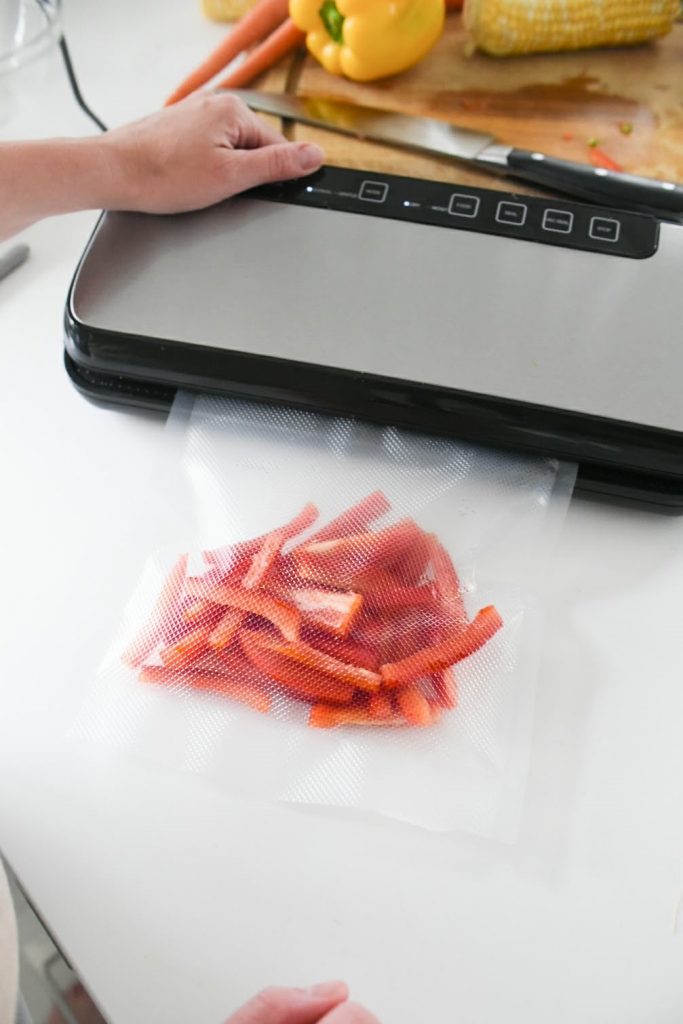One of the seemingly never-ending challenges I face in my kitchen is dreaming up the perfect meal, only to realize that I have a pantry full of food that’s just a day or two away from going bad. While it is possible to go to the grocery store every time you decide what to make, it’s much more likely that after a hard day at work or watching the kiddos, you simply want to pour a glass of wine, grab what’s already on hand, and make something awesome in the kitchen. I certainly know the feeling, and whether it’s a healthy breakfast on the go or a cozy meal in the evening, coming up short on an essential ingredient can be the difference between an excellent meal, or unexciting filler.
What I’ve discovered is that even though most fruits and vegetables won’t stay fresh in the refrigerator for long, there are some simple things you can do to significantly prolong how long they will remain usable with the help of the freezer. These food saving tips and tricks preserve 100% of the flavor, color and even crunch, so that your well-kept produce can be used to its full potential, even weeks, after you bring it home from the market.
Here are five easy and useful tips for getting the most out of your perishable fruits and vegetables.
Batch It Up
Most people know that one great way to save time when prepping meals is to portion things ahead of time. This same strategy is a must-use when it comes to freezing food or keeping leftovers around in the fridge. Portioning for smoothies in the morning or a quick stir-fry in the evening is a great way to save time and remove the mental energy needed to measure out fruits and vegetables before you long day begins or after it ends. For example, I like to portion out bananas, strawberries and blueberries in one freezer bag for when I want to make a smoothie in the morning.
I also have a few bags of sliced bell pepper, snap peas, and chopped broccoli in the freezer that can quickly be steamed with soy sauce onion and garlic for a great vegetarian stir fry.
Freeze Quick
Assuming you aren’t planning on consuming them in the next couple of days, the sooner you freeze fruits and vegetables, the better they’ll be when you unfreeze and decide to incorporate into a recipe. By better, I mean that they will not only retain most of their flavour, but they will also keep much of their vibrant colors and textures.
Blanch Veggies, Skip the Fruits
Blanching is an easy technique where the cook steams or boils vegetables for a short amount of time. Blanching stops the enzymes that cause vegetables to spoil and go bad. Blanching before freezing will preserve not just the color but also the nutrients, texture and flavor as well. Before freezing, you should blanch vegetables but skip doing so on the fruits. Blanching fruits will break them down and leave them unsightly, and without full flavor.
Space It Out Then Combine
All too often I see freezers where frozen fruits and vegetables are stuck together in a freezer bag, having to be separated first and then thawed out completely. Instead of cramming everything into one bag and tossing it into a freezer, try to freeze fruits and vegetables with a little space (I prefer laying out berries and veggies on a baking sheet while freezing) and then placing them in a freezer bag together.
Vacuum Seal If You Can
A vacuum seal can be worth its weight in gold, including when it comes to keeping fruits and vegetables fresh. Expert tip: remove as much air as possible from storage or freezer bags before freezing. Air and space allow room for frost to form on your frozen goods, and I promise you don’t want that.
Bonus Tip
Unfortunately, certain vegetables don’t do well with freezing. I recommend avoiding cabbage, celery, watercress, lettuce, endive, parsley and radishes. If you do try and freeze these leafy, soil-based items, then you can expect them to be limp, water-logged, and lacking colour when they are thawed for use.
Make The Most Of Your Most Flavorful Ingredients
Fruits and vegetables make every meal better. Having fresh produce on the plate or as part of the recipe can take even the most mundane meal to new heights. The good news is that with a tiny amount of forethought, you can extend the life of everything from tomatoes to oranges, to avocados to okra, following the simple food preservation tips above.
About The Author
Thea Van Herwaarden is a Vancouver-based food blogger and on-air talent known worldwide. She has appeared on both Canadian and American television, acted as a national campaign spokesperson for major lifestyle chains, and serves currently as a brand ambassador for a wide range of food and home brands. In 2017, her skills in the kitchen landed her in the “Top 2” spot on Master Chef Canada. Following that, her version of a nduja ricotta tortellini made it on the menu of Jamie Oliver’s restaurant, Jamie Italian. Thea has since then launched her own brand, Théasty, where she showcases global tastes and travel, national and international restaurants and recipes, as well as lifestyle tips. All of this is shared with her loyal 19K followers on Instagram, and on her blog.

 Share This Post
Share This Post














